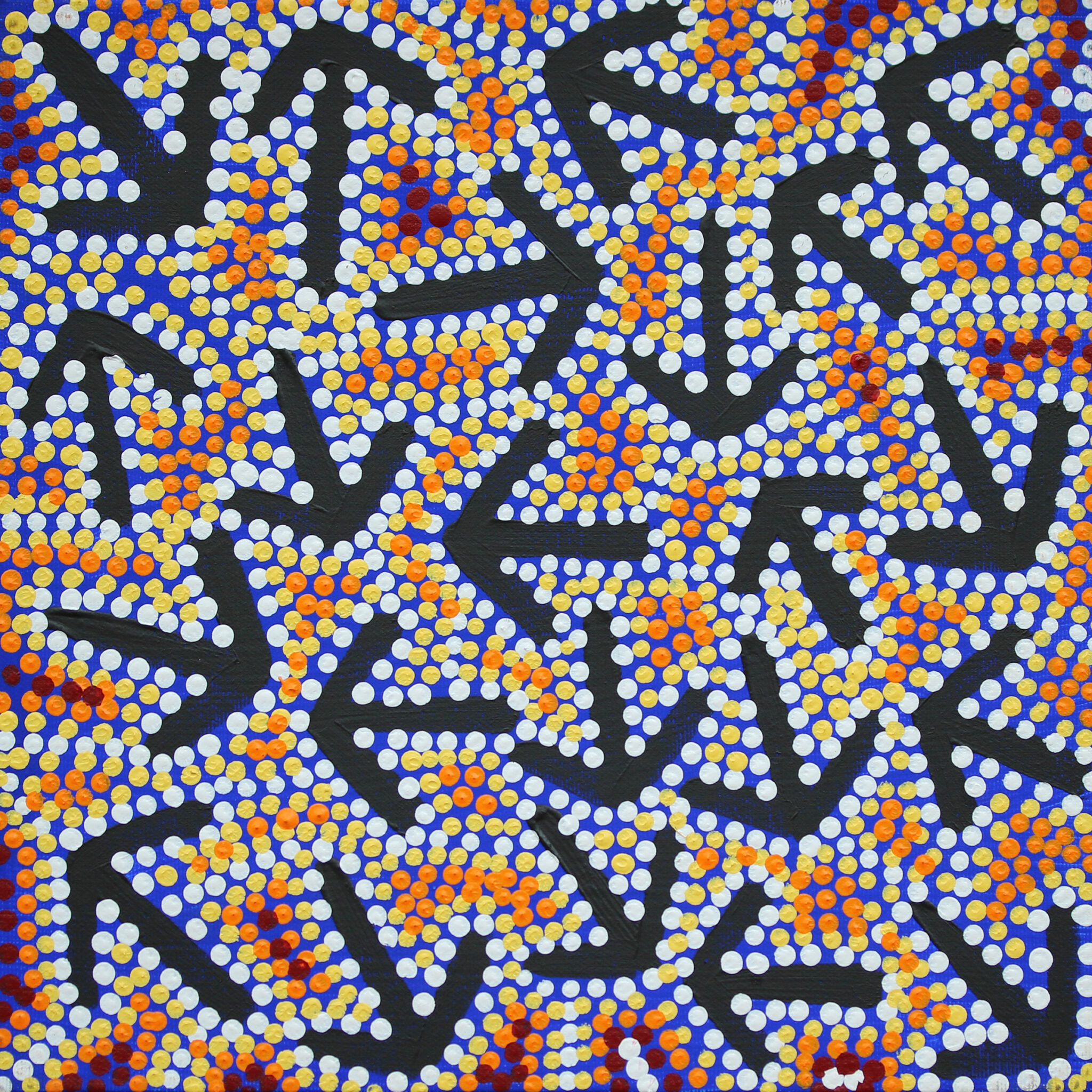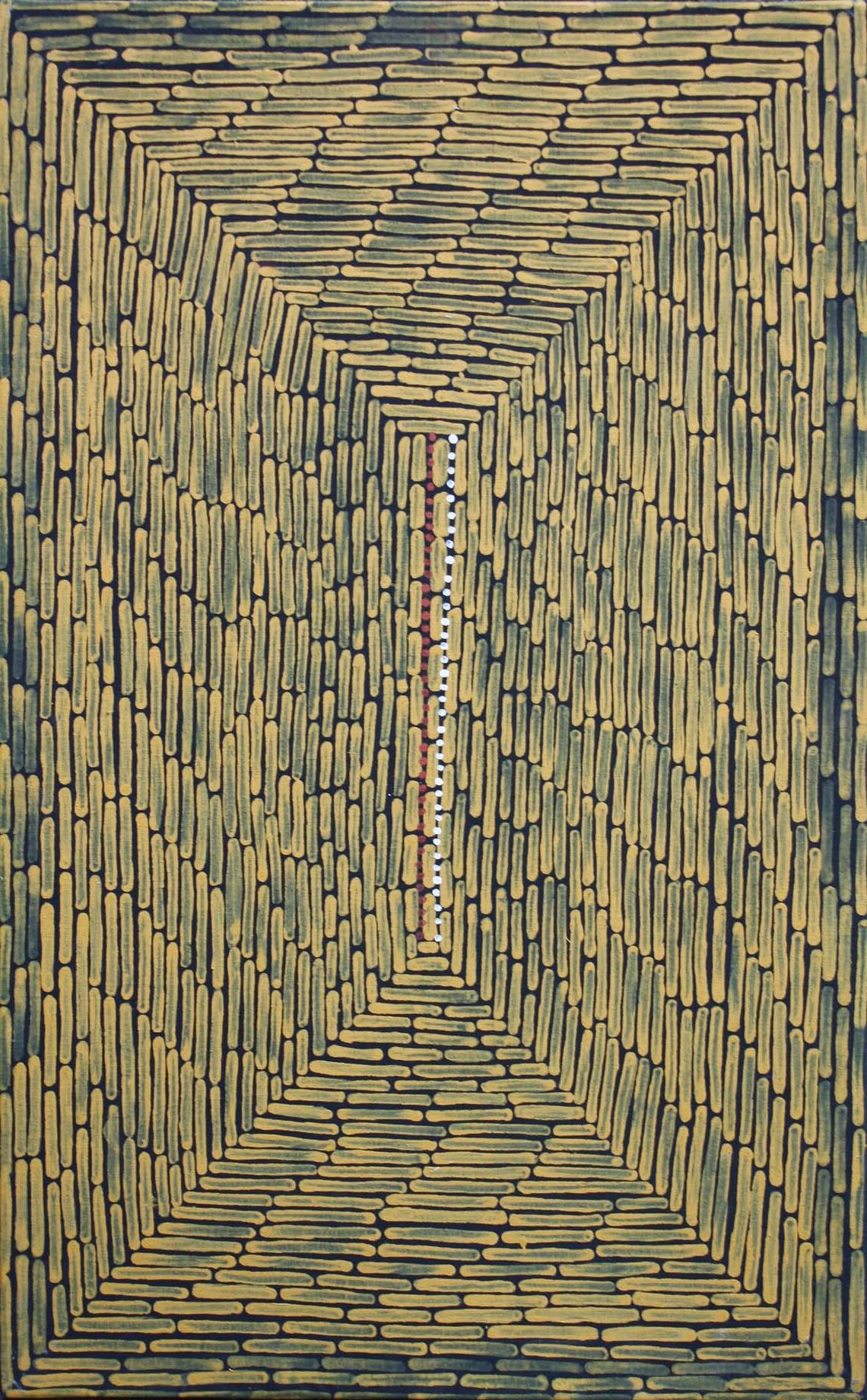Muriel Maynard
Details
Biography
Muriel Maynard, Trawlwoolway shell-necklace maker and weaver, was born on Cape Barren Island in 1937. Maynard’s mother died when she was very young, and the auntie who fostered her as a child was a shell necklace maker. Maynard used to collect shells on the beach with her aunt and other family members, and watch her string them together at night by the light of a kerosene lamp. She would come to carry on the necklace making tradition alongside her basket-weaving practice.
Maynard’s experimental approach to these crafts was reflected in her taste for stitching small, decorative posies of shells to the exterior fibre of some baskets. In 2004 Maynard participated in the Purrelayde Project along with fellow Tasmanian shell-necklace makers Dulcie Greeno and Corrie Fullard. The project was designed to facilitate passing on the techniques and traditions associated with the craft from this older generation of shellworkers to family members and peers.
Maynard participated in a number of exhibitions, including Tactility at the National Gallery of Australia in 2003 and Woven Forms, which began its national tour at Sydney’s Object Gallery in 2005. Her necklaces and baskets are represented in numerous state museum and gallery collections. In 2000 Maynard and fellow Tasmanian Aboriginal artists Vicki West and Lola Greeno were commissioned by Tasmanian Parks and Wildlife to produce an installation for the Lake St Clair Visitor’s Centre.The three women collaborated to produce a woven sculpture that acknowledges the nine Aboriginal nations of Tasmania, and celebrates the continuity of Aboriginal people’s presence in Tasmania.
Muriel Maynard passed away in November 2008.
Shell necklace maker Muriel Maynard
From web site: http://hosting.collectionsaustralia.net/foundmade/shellmakersbd47.html?ID=13
I was born on Cape Barren Island. It’s only a small island, and very isolated it was when I was growing up in the 30s and 40s. My mother died when I was only three. There were six of us on the island and we were fostered out to our aunties and relations. The lady I was fostered out to, she was an auntie and she was one of our stringers, making the shell necklaces.
I started off by just going collecting the shells with her. In those days, when those old ladies strung the shells, that little bit of money they got it would have been about ten shillings or one pound they’d get for a string of shells with that they could buy something they needed.
We had no electricity on the island, only kerosene lamps. My auntie sat in the front room – we never called it the lounge room, it was always the front room – by the kerosene light, stringing her shells of a night. She had a cupboard that she kept her shells in but no-one could touch that. She used to let us watch her string.
They were secret, the women, in doing it. No-one saw each other’s necklaces. They did them at home. They’d go in groups collecting shells but they’d never get in a group to string shells or anything like that.
We could go and collect the shells but they didn’t show us how to make the shell necklaces. I think it’s because the shells they got were so precious to them they wouldn’t let the younger ones touch them.
To get the mareeners we wait for a spring tide and we have to walk into the water up to our waist or knees and pull the mareener shells off (the seaweed). It’s the same as the little rice shells, they live in the dry seaweed. We fill our buckets up with seaweed then we go and wash the seaweed out and these shells fall in the bottom of the bucket. The toothies we have to pick up one at a time too. So it takes a long time to make one of these necklaces.
I love the beaches and I love picking up shells, sorting them out, washing and cleaning them. I can string and string and string. It takes about 3 or 4 days to make a necklace. And with these little ones, you’ve got to count them all that you put on. To get our patterns, we try to make them as even as we can.
I don’t like to wear my necklaces so that they can be broken. Collector’s items I reckon they are. I give them to friends and if someone I know asks me I’ll make a necklace for them.
I have two daughters. One lives on Flinders lsland and she collects shells for me but the other one, she’s not interested. She works at the hospital. She’s more interested in computers!
In one way I suppose I am the custodian of knowledge about our culture. That means a lot to us. We remember when the older ladies used to string them and it’s got a lot of memories for us. When we go back to Cape Barren I can imagine those old ladies over on those beaches, walking that far and taking whatever they had to eat, boiling the billy on the rocks and making the fire, cooking and eating shellfish. I never forget things like that. I feel like I’m the next generation carrying it on and I’m proud of that.
I’ve tried to hand the shell necklace making down to the younger ones and that’s one thing I’d like to do, hand it down so the younger ones can keep it going.
Artwork
-
29 Hunter St, Hobart 7000,
Tasmania, Australia - +61 3 6236 9200
- euan@artmob.com.au
Cash – locally only – up to $10,000 only. Layby facilities available. Card details can be advised securely using WhatsApp.
© Art Mob Pty Ltd, Aboriginal Fine Art Dealer, all rights reserved.


